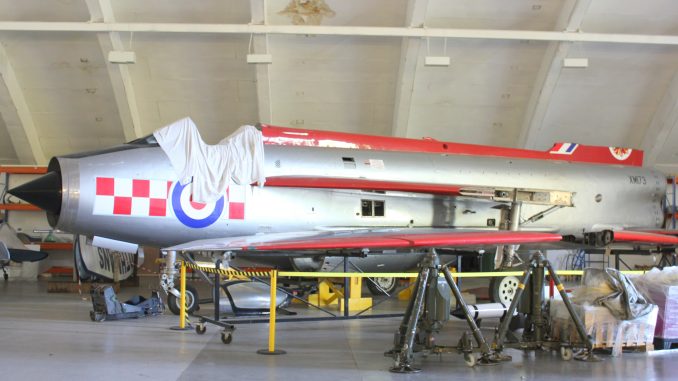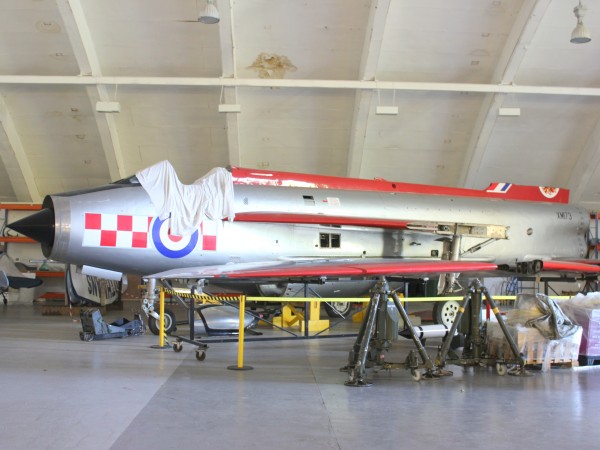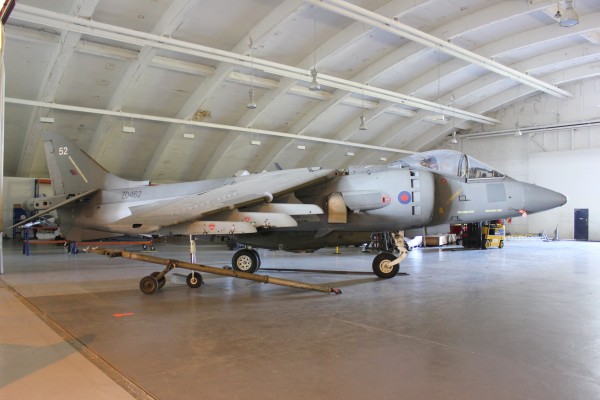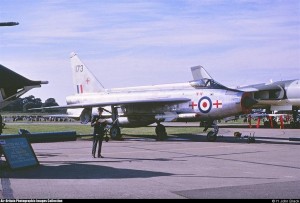

in storage at C2 Aviation at Cotswold airport pending a move to Dyson’s at
Malmesbury, Wiltshire.
(Image credit Geoff Jones)
Two iconic British-designed jet fighters are now being preserved by Sir James Dyson, “….as an inspiration to Dyson engineers”. At the industrial entrepreneur’s UK headquarters at Malmesbury, Wiltshire the designer and manufacturer of the Dyson, a bag-less vacuum cleaner who’s sales success may one day mean the Dyson out-rivals the ubiquitous Hoover, Sir James Dyson plans a small “museum” to celebrate British engineering excellence.
In 2012 Dyson acquired a surviving BAe Harrier GR.7 (ZD462) – 74 had been sold by the UK’s Ministry of Defense to the US for £112 million when they were prematurely retired from the RAF due to budget cuts. They had just received major overhauls at a cost of £600 million! This 1 squadron example was based at RAF Wittering and had been deployed in the Mediterranean for night landings on the HMS Invincible; one of ZD462’s went wrong and the aircraft ditched, the pilot ejected and survived. The aircraft was also rescued and went to RAF Cosford where its engine was removed, then to Sproughton, Suffolk before being acquired by Dyson. He placed it in the car parking lot of his UK headquarters – he takes up the story, “….. as inspiration to Dyson engineers, but also as a reminder of what happens when you loose your resolve. Harrier is one of Britain’s greatest technological achievements and yet, through what can only be described as a lack of vision we are out of the Harrier business and have even divested ourselves of what remained of our fleet, at rock-bottom prices”.

Malmesbury, Wiltshire has now been removed in to storage at C2 Aviation at
Cotswold airport pending planning approval for their display at Malmesbury. (Image credit Geoff Jones)

The Harrier was to be joined at Dyson’s headquarters by an English Electric (BAC) Lightning F.1A (XM173) that flew with the RAF at Coltishall, Leuchars and Binbrook until retired in 1973. Between 1976 and 2007 it had been the gate guard at RAF Bentley Priory until disposed of to MSS Holdings Ltd at Kirkham in Lancashire. In August 2012 it was moved south to a yard at Old Sodbury, Gloucestershire and was to have been mounted on a pole pointing vertically upwards, again as a reminder, like the Harrier, of British engineering excellence. The local planning authority had different ideas, and refused Dyson permission to exhibit these aircraft in this way outside his headquarters. Both the aircraft have now been removed to the C2 Aviation hangar at Cotswold airport (Kemble) for safe keeping, whilst the planning dispute is resolved. C2 specialise in restoration and maintenance work on historic aircraft and have been responsible for getting the Midair Squadron’s Canberra PR9 (XH134) back in to the air in 2013.
It is rumoured that Dyson is now seeking planning permission for the construction of a special ‘museum building’ at his Sproughton, Malmesbury headquarters. This will not only house the Harrier and Lightning in a protected environment, but allow the collection and display of other iconic examples of British engineering prowess.

Be the first to comment
Graphic Design, Branding and Aviation Art